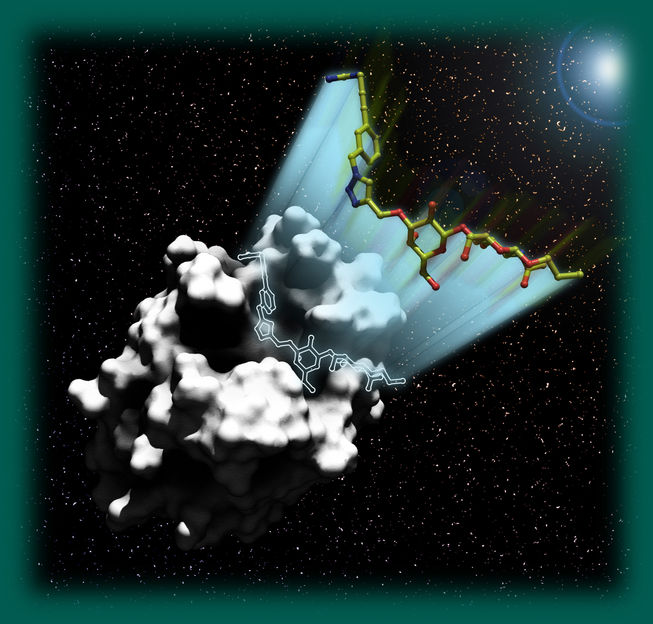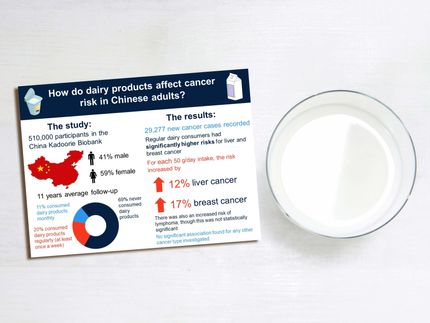What makes erionite carcinogenic?
Mineralogists provide new findings on carcinogenic silicate
The mineral erionite is considered to be highly carcinogenic and is on the World Health Organisation’s list of substances that cause cancer. A few years ago, an entire village in Turkey actually had to be moved, because the substance was very common in the surrounding area and every second inhabitant died of a particular type of cancer caused by breathing in erionite particles. Up to now it has been thought that iron as a constituent element of the mineral erionite is the reason for the carcinogenic effect. However, mineralogists of Friedrich Schiller University Jena (Germany), together with colleagues from the University of Modena (Italy), have discovered that this metal does not even appear in the crystal structure of erionite.

Fibers of the mineral erionite with adhering particles, taken by a transmission electron microscope at the Institute of Geosciences.
Kilian Pollok/FSU
Iron is not part of erionite
“Like asbestos, erionite is composed of fibres, which are inhaled and reach the lungs, where they cause considerable damage, because they are too long to be eliminated by the body’s own defences,” explains Dr Kilian Pollok of the University Jena. “In both cases, doctors have until now considered the iron in the mineral to be mainly responsible for the cancer cases, as that metal encourages the transition from inflammation to tumour development.” However, the latest findings mean that this assumption needs to be re-examined, as, unlike most substances lumped together under the umbrella term asbestos, iron does not form part of erionite’s crystal structure.
“Using a transmission electron microscope, we examined erionite samples just a few micrometres in size in high resolution,” says Prof. Falko Langenhorst. “In this way, we established that iron is only present in accompanying minerals attached to erionite, not in the erionite itself.” Usually, the body’s own phagocytes are able to deal with such iron particles, but they might be hampered by the direct contact to the fibres. The silicate, which results from weathering processes, is found in various volcanic regions worldwide. However, the iron content of the accompanying material attached to it can vary considerably, depending on the environment and the region. For example, diverse US samples show high and low concentrations of the metal, which appear to be correlated with toxicity.
Erionite as road gravel
The mineralogists’ new findings therefore raise new questions that need to be answered: does erionite have a carcinogenic effect purely due to its asbestos-like form or does this effect develop only in combination with the ferrous particles? This is important, because although the material does not have – and has never had – any specific use, in contrast to asbestos, it still frequently ends up in proximity to humans. In the USA, for example, tuff containing erionite has been used as road gravel.
“As mineralogists, we cannot of course resolve current medical issues, but thanks to the outstanding technical facilities here in Jena, we are able to use basic research to provide important new information on carcinogenic mechanisms,” says Langenhorst. “And it shows once again how multifaceted mineralogy as a science is.”
Original publication
Original publication
Alessandro F. Gualtieri, Nicola Bursi Gandolfi, Simone Pollastri, Kilian Pollok & Falko Langenhorst; "Where is iron in erionite? A multidisciplinary study on fibrous erionite-Na from Jersey (Nevada, USA)"; Scientific Reports; 6, Article number: 37981 (2016)
Topics
Organizations
Other news from the department science

Get the life science industry in your inbox
By submitting this form you agree that LUMITOS AG will send you the newsletter(s) selected above by email. Your data will not be passed on to third parties. Your data will be stored and processed in accordance with our data protection regulations. LUMITOS may contact you by email for the purpose of advertising or market and opinion surveys. You can revoke your consent at any time without giving reasons to LUMITOS AG, Ernst-Augustin-Str. 2, 12489 Berlin, Germany or by e-mail at revoke@lumitos.com with effect for the future. In addition, each email contains a link to unsubscribe from the corresponding newsletter.
Most read news
More news from our other portals
Last viewed contents

Cancer detection with sugar molecules
Parahuman

Powering a microprocessor by photosynthesis - Algae-powered computing: Scientists create reliable and renewable biological photovoltaic cell
Cosmos Alliance - Washington, USA
Genzyme’s Alemtuzumab for Multiple Sclerosis Shows Durable Treatment Benefit in Review of Four-Year Phase 2 Trial Data - Company’s CARE-MS II Phase 3 Trial Completes Enrollment
Safe medications thanks to new test procedures - High-Tech Gründerfonds invests in SIGNATOPE GmbH
Joint efforts to control diseases transmitted from animals to humans - BfR Symposium on Zoonoses and Food Safety
Genmab Announces Lift of Zalutumumab Partial Clinical Hold
Celera and Collaborators Discover a Genetic Marker Associated with Severe Coronary Artery Disease - Carriers of gene variant exhibit an approximate 3-fold increased risk of disease



















































